#Canadian mermaid
Photo
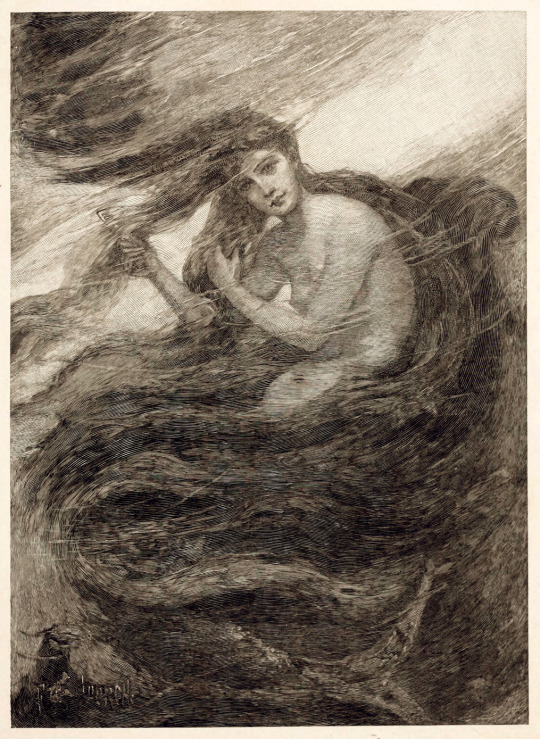
Frederick Simpson Coburn (1871-1960), ''Sea-fairies, and Other Poems'' by Alfred Tennyson, 1890
Source
#frederick simpson coburn#f. s. coburn#canadian artists#canadian painters#mermaids#alfred tennyson#vintage art#vintage illustration
323 notes
·
View notes
Text
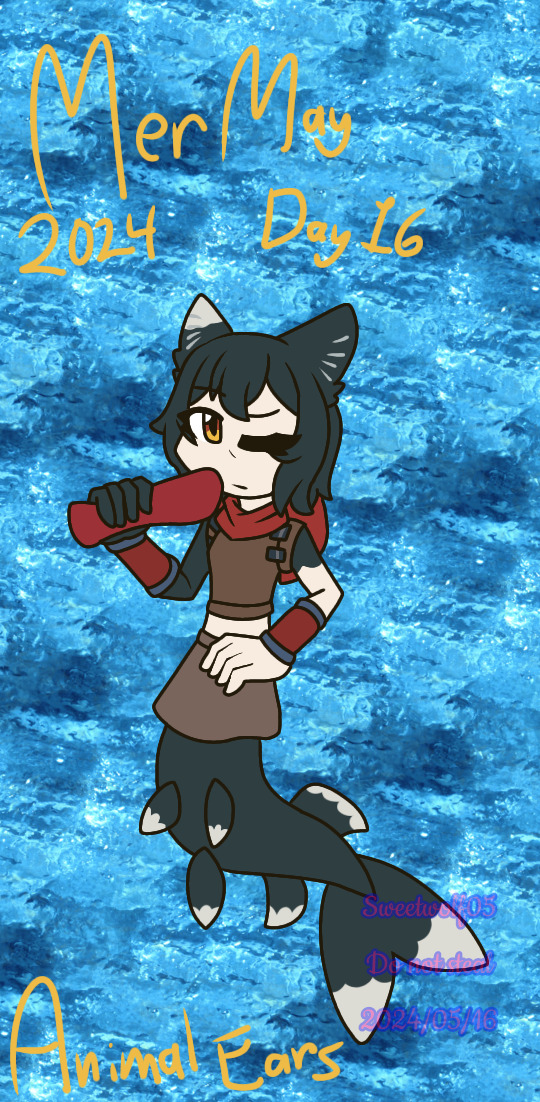
Mermay 2024 Day 16
Animal Ears, Mermay prompt based on Legendary444 on DeviantArt
#dungeon meshi#delicious in dungeon#izutsumi#Asebi#Anime#Art#Ryoko Kui#Netflix#Cinawolf#CW Food#CW: Food#MerMay#Mermaid#MerMay 2024#2024#small artist#canadian artist#artists on tumblr#DeviantArt#Legendary444
21 notes
·
View notes
Photo





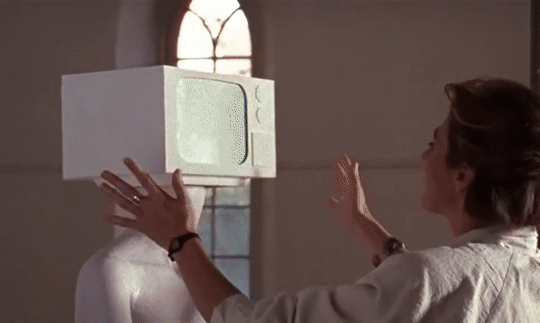
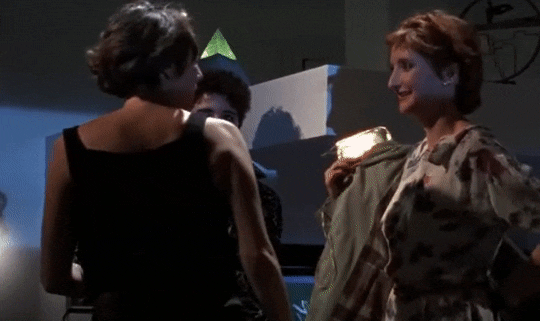

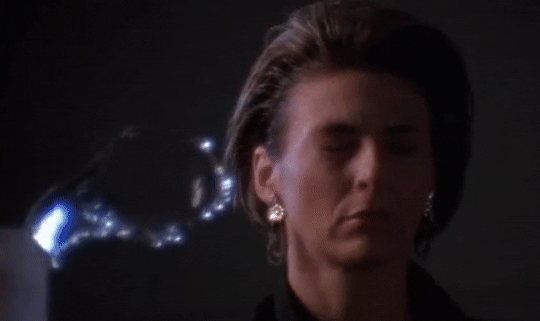
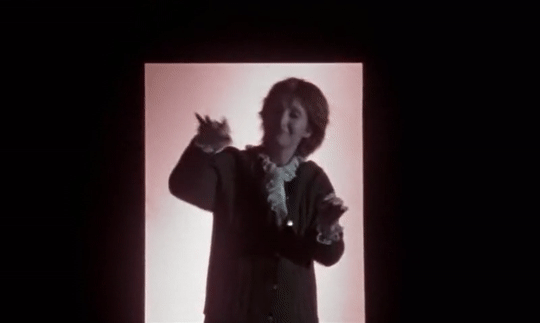
I'VE HEARD THE MERMAIDS SINGING (1987)
dir. Patricia Rozema
Amateur photographer Polly lands a temp job at a Toronto art gallery run by elegant and sophisticated Gabrielle, who is also a painter. Polly is impressed with Gabrielle's paintings. The absent-minded temp with spiky orange hair and the polished curator with a gift for gab are like night and day, yet a strong connection builds between these two women through their shared love of art, and their genuine curiosity and need for love, but as Polly gets to know Gabrielle's lover, Mary, and becomes entangled in their lives, she realizes that Gabrielle isn't exactly who she appears to be.
(link in title)
#lgbt cinema#lesbian cinema#i've heard the mermaids singing#canadian cinema#lgbt#lesbian#canada#lgbt film#lesbian film#canadian film#lgbt movie#lesbian movies#canadian movies#lgbt media#lesbian media#queer cinema#sheila mccarthy#paule baillargeon#ann-marie macdonald#1987#80s#1980s#80s films#80s cinema#1980s movies#1980s cinema#1980s film
98 notes
·
View notes
Text


Emerald Princess by Simon Morris
The Emerald Princess is a 9 foot tall, 500 pound underwater bronze sculpture by Simon Morris. It is located 60 feet underwater in Mermaid Cove, off the coast of Saltery Bay Provincial Park in British Columbia, Canada. It was made in 1989. Photo credit to mermaidsofearth.com
#motelpearl#uploads#art#sculpture#mermaid#saltery bay#saltery bay provincial park#british columbia#canada#underwater#underwater sculpture#underwater art#statue#bronze statue#simon morris#sirencore#mermaidcore#watercore#mermaid aesthetic#siren aesthetic#mermaid art#merfolk#siren#whimsical#mystical#canadian art
3 notes
·
View notes
Text
Well this sums me up in one pic lmao

#420#weed#high af#kitten#girls who smoke#canada#mermaid#canadian girl#Loona#Helluva boss#ariel#jeffree star#sharkrobot
20 notes
·
View notes
Photo
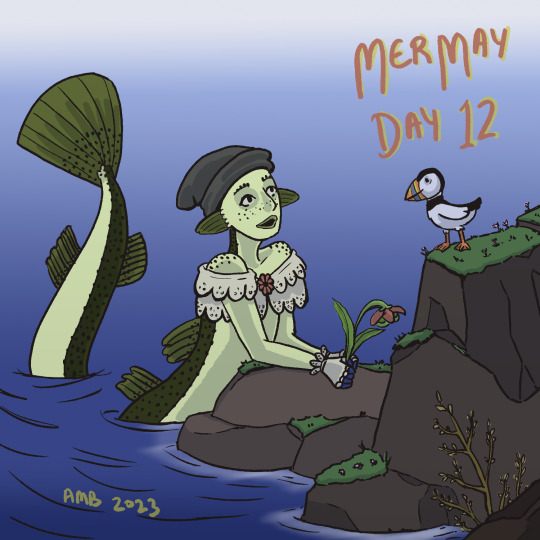
Some Newfoundland vibes for today's MerMay to celebrate my computer being back in working order! (Based the colour scheme and tail design of the Newfie mermaid off of an Atlantic cod)
8 notes
·
View notes
Text
The Mermaid of the Magdalenes

Photo by Artemis Winterford
Canada has a weird hodge podge of folk tales. Our stories tend to be a blend of first nations mythology and European fairy tales. Then as books and later movies came into popularity, traditional oral story telling started to die out. One might think, Canada was just too young of a country to develop it's own folk tales to pass down. Well, think again.
In 1918, former member of the house of commons Cyrus Macmillan, compiled a number of Canadian Folk Tales into a book called Canadian Wonder Tales. He wrote them in the style similar to the Brothers Grimm, sometimes adding vessels for magic. His hope was these stories would be accessible to not just more people, but schoolers as well. However, while he thanks the first nations people or "Indians" as he got many of these stories directly from them, he called Canada "a country with a romantic past." with many stories told in a way where it looked like the white man and the Indian were old chums. For those unaware, Canada has had a very problematic history with oppression of our first nations people.
For that reason, today I'd like to focus on a Maritimes story, likely shared by sailors. It is a uniquely Canadian story about a girl who just longs for some sardines. Sardines when used in Kitchen Magic can attract luck, health, boost family bonds, community, and prosperity. This is the story of the Mermaid of the Magdalenes.
Far off the north-east coast of Canada is a group of rugged islands called the Magdalenes. They are a lonely, barren group, where grass and flowers and trees grow scantily. There, the northern storms rage with their wildest fury, and the sea breaks with its greatest force upon the bleak rocks. Numberless birds of strange cries and colours fly constantly about. On days when the storm dashes the sea white and angry against the coast, even the thunder of the surf is almost shut out by the screaming of countless gulls; and on clear days the sun is hidden when the birds rise in clouds from their nests. The "Isle of Birds," the Jesuits called one of the islands when they first visited the group hundreds of years ago, and it is an "Isle of Birds" still. It is a wild and rock-bound desolate land.
But although the islands are barren of grass and flowers and trees, the waters around and between them are rich in fish. "The Kingdom of Fish," men call the place, for adventurous traders grow wealthy there reaping the harvest of the sea. The greatest product of the waters is the lobster. He always inhabited these northern seas, and about his power in olden times strange tales are told. Away off the coast of one of the islands, you can still see on fine moonlight nights in May, and also during the day once a year, a maiden holding a glass in her hand, combing her long hair, and looking wistfully to the land. Sometimes, too, on calm nights you can still hear her strange song above the murmur of the waves. She is the phantom lady of the Island over whom the Lobster in far away days used his power. She is now a prisoner in the deep, held there as a punishment for her deeds.
Now, it happened that long ago when fish were first canned for food there was a great slaughter of sardines—the tiny fish of the sea—by cruel money-greedy traders who caught them, packed them in small boxes, and shipped them to far countries, just as they do to-day. These traders received large money rewards for their labour, for people all over the world liked the little fish and paid a high price for them. The sardines saw their number slowly growing smaller, for, being little, they were helpless against their captors, and among all their family there was great sorrow. In despair they asked the big fish of the sea to help them. At last, in answer to their appeal, a meeting of all the fish in the sea was called. Here the big fish took an oath to help their small cousins in their struggle with man, and to punish when they could all who ate or fished the sardine family. And the little fish rejoiced greatly.
One May day a large ship loaded with packed fish was wrecked on the sunken rocks of the Magdalene Islands. Soon the ship was broken up by the heavy surf on the sharp reef, and her cargo was strewn along the shore. It happened that in the cargo were many boxes of sardines, and they too were washed up on the beach by the tide. In the evening, after the sea had calmed, a fair maiden who lived on the Island with her father, a fish trader, walked along the shore alone to view the wreckage of the broken ship. She found, to her delight, one of the boxes in which the sardines were packed. She resolved at once to eat the contents, for she too, like all the world at that time, liked the little fish. But although she tried as hard as she could, she was unable to open the box. She sat by the side of the sea and sang a song of lament, calling on anyone who could to open the box for her. She sang:
"I love sardines when they're boiled with beans
And mixed with the sands of the sea."
Away out from the beach a skate-fish was resting on a sand-bar. Hearing the song of the maiden, he quickly swam towards the shore. When he came close enough to hear the words of the song and to know what the box contained, he swam away in great disgust, for he was cousin to the sardines in the box, and came from the same family tree as they. But he was too timid to try to punish the maiden. Then a bold merman heard the song. He had long looked for a land wife to live with him in his home under the sea; now he said, "Here at last is a shore maiden for me," for the voice of the singer was beautiful to him. So he went to his looking-glass to dress himself in the most genteel fashion. From bright clean sea-weeds and sea-leaves he quickly made himself a new suit, all green and yellow; and he covered his feet with bright-coloured shells, and his neck with pearls which the oyster gave him; and dressing himself carefully, he hastened in the direction of the song. But when he came close enough to hear the words and to know what the box contained, he remembered his oath at the great gathering of the fish, and although he loved the singer he swam hurriedly away. For, like the skate-fish, he too feared to try to punish the maiden.
The maiden was now sore distressed, for it was growing late and the moon was already far up in the sky. The box was still unopened, and the girl was hungry for the fish. Going to the edge of the sea, she knocked the box hard against a large rock that lay in the water, hoping thereby to break it open. But the box would not break. Now, it chanced that under the rock a large black lobster lay sleeping quietly after a long battle with an enemy in the sea. The tapping on the roof of his sleeping-place awoke him, and he rubbed his eyes and listened. The maiden was again singing her song:—
"Oh I love sardines when they're boiled with beans,
And mixed with the sands of the sea.
I am dying for some. Will nobody come
And open this box for me?"
Then the Lobster remembered his oath at the great gathering of the fish. Unlike the skate-fish and the merman, he had no fear of the maiden, for he knew his power. He determined to punish her, and he resolved at once upon a crafty trick. He came out of his hiding place, and waving his claw politely he said, "Fair lady, I can open the box for you; give it to me and let me try." But when, in answer, she held the box out towards him in her hand, he grasped her by the wrist with his strong claw, and, holding her fast, he swam with her far out to sea.
Where he went and what he did with her, no man knows. It is believed that he sold her to the merman who had long sought a shore-wife, and that she is still being slowly changed into a fish. One thing is certain,—she never came back to land. But on the first day of May she always appears on the water away off the coast of the Island; and if that day is fine and clear you can still always see her there. She holds in her hand a looking-glass in which in the sunlight she looks at herself to see if she is nearer to a fish than she was on May Day the year before when she last appeared in the sun; and she is combing her long hair which is now covered with pearls; and she looks with longing eyes to the shore and her old home. And sometimes on moonlight nights in May, when the wind is still and the sea is calm, the fishermen hear her strange sad song across the waters. They know then that she is lonely, and that she is singing her song to lure land-comrades for company to her side. And on these nights they stay on shore, for they know that if they venture out to sea she will seize them and carry them off for playmates to her home of bright shells far under the sea.
#food and folklore#Canadian folktales#Maritimes#kitchen witch#kitchen witchcraft#sardines#mermaid#merman#paganisim#witch#klickwitch#Mermaid of the Magdalenes#Magdalenes#story#sea witch
2 notes
·
View notes
Text
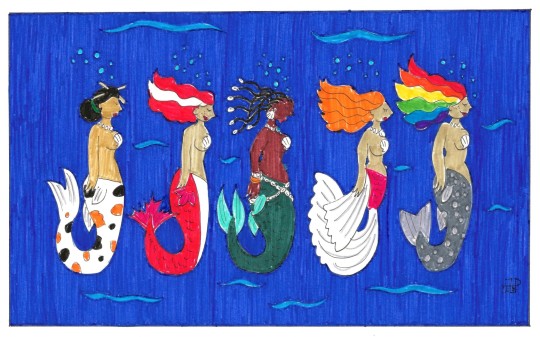
"Five Sleepy Mermaids" 🧜♀️😴
#mythology#mermaid#african#canadian#japanese#aquatic#underwater#mythical creatures#rainbow hair#koi mermaid#koi#trout#trout mermaid#yemanja#merbelle#laurentine
4 notes
·
View notes
Text
It all started with a mouse
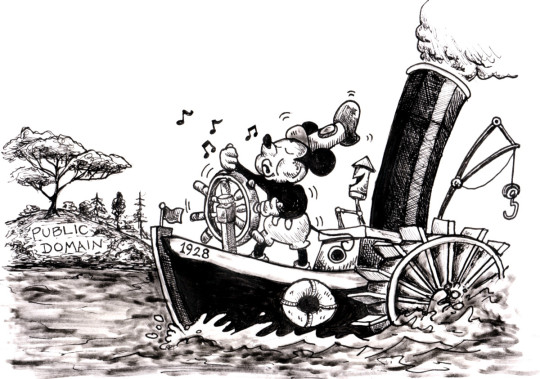
For the public domain, time stopped in 1998, when the Sonny Bono Copyright Act froze copyright expirations for 20 years. In 2019, time started again, with a massive crop of works from 1923 returning to the public domain, free for all to use and adapt:
https://web.law.duke.edu/cspd/publicdomainday/2019/
No one is better at conveying the power of the public domain than Jennifer Jenkins and James Boyle, who run the Duke Center for the Study of the Public Domain. For years leading up to 2019, the pair published an annual roundup of what we would have gotten from the public domain in a universe where the 1998 Act never passed. Since 2019, they've switched to celebrating what we're actually getting each year. Last year's was a banger:
https://pluralistic.net/2022/12/20/free-for-2023/#oy-canada
But while there's been moderate excitement at the publicdomainification of "Yes, We Have No Bananas," AA Milne's "Now We Are Six," and Sherlock Holmes, the main event that everyone's anticipated arrives on January 1, 2024, when Mickey Mouse enters the public domain.
The first appearance of Mickey Mouse was in 1928's Steamboat Willie. Disney was critical to the lobbying efforts that extended copyright in 1976 and again in 1998, so much so that the 1998 Act is sometimes called the Mickey Mouse Protection Act. Disney and its allies were so effective at securing these regulatory gifts that many people doubted that this day would ever come. Surely Disney would secure another retrospective copyright term extension before Jan 1, 2024. I had long arguments with comrades about this – people like Project Gutenberg founder Michael S Hart (RIP) were fatalistically certain the public domain would never come back.
But they were wrong. The public outrage over copyright term extensions came too late to stave off the slow-motion arson of the 1976 and 1998 Acts, but it was sufficient to keep a third extension away from the USA. Canada wasn't so lucky: Justin Trudeau let Trump bully him into taking 20 years' worth of works out of Canada's public domain in the revised NAFTA agreement, making swathes of works by living Canadian authors illegal at the stroke of a pen, in a gift to the distant descendants of long-dead foreign authors.
Now, with Mickey's liberation bare days away, there's a mounting sense of excitement and unease. Will Mickey actually be free? The answer is a resounding YES! (albeit with a few caveats). In a prelude to this year's public domain roundup, Jennifer Jenkins has published a full and delightful guide to The Mouse and IP from Jan 1 on:
https://web.law.duke.edu/cspd/mickey/
Disney loves the public domain. Its best-loved works, from The Sorcerer's Apprentice to Sleeping Beauty, Pinnocchio to The Little Mermaid, are gorgeous, thoughtful, and lively reworkings of material from the public domain. Disney loves the public domain – we just wish it would share.
Disney loves copyright's other flexibilities, too, like fair use. Walt told the papers that he took his inspiration for Steamboat Willie from Charlie Chaplin and Douglas Fairbanks, making fair use of their performances to imbue Mickey with his mischief and derring do. Disney loves fair use – we just wish it would share.
Disney loves copyright's limitations. Steamboat Willie was inspired by Buster Keaton's silent film Steamboat Bill (titles aren't copyrightable). Disney loves copyright's limitations – we just wish it would share.
As Jenkins writes, Disney's relationship to copyright is wildly contradictory. It's the poster child for the public domain's power as a source of inspiration for worthy (and profitable) new works. It's also the chief villain in the impoverishment and near-extinction of the public domain. Truly, every pirate wants to be an admiral.
Disney's reliance on – and sabotage of – the public domain is ironic. Jenkins compares it to "an oil company relying on solar power to run its rigs." Come January 1, Disney will have to share.
Now, if you've heard anything about this, you've probably been told that Mickey isn't really entering the public domain. Between trademark claims and later copyrightable elements of Mickey's design, Mickey's status will be too complex to understand. That's totally wrong.

Jenkins illustrates the relationship between these three elements in (what else) a Mickey-shaped Venn diagram. Topline: you can use all the elements of Mickey that are present in Steamboat Willie, along with some elements that were added later, provided that you make it clear that your work isn't affiliated with Disney.
Let's unpack that. The copyrightable status of a character used to be vague and complex, but several high-profile cases have brought clarity to the question. The big one is Les Klinger's case against the Arthur Conan Doyle estate over Sherlock Holmes. That case established that when a character appears in both public domain and copyrighted works, the character is in the public domain, and you are "free to copy story elements from the public domain works":
https://freesherlock.files.wordpress.com/2013/12/klinger-order-on-motion-for-summary-judgment-c.pdf
This case was appealed all the way to the Supreme Court, who declined to hear it. It's settled law.
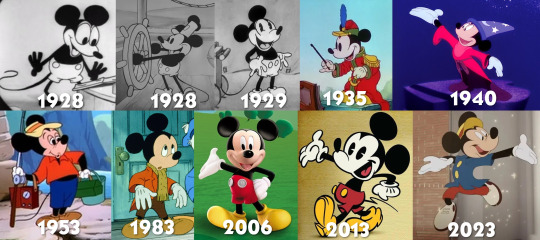
So, which parts of Mickey aren't going into the public domain? Elements that came later: white gloves, color. But that doesn't mean you can't add different gloves, or different colorways. The idea of a eyes with pupils is not copyrightable – only the specific eyes that Disney added.
Other later elements that don't qualify for copyright: a squeaky mouse voice, being adorable, doing jaunty dances, etc. These are all generic characteristics of cartoon mice, and they're free for you to use. Jenkins is more cautious on whether you can give your Mickey red shorts. She judges that "a single, bright, primary color for an article of clothing does not meet the copyrightability threshold" but without settled law, you might wanna change the colors.
But what about trademark? For years, Disney has included a clip from Steamboat Willie at the start of each of its films. Many observers characterized this as a bid to create a de facto perpetual copyright, by making Steamboat Willie inescapably associated with products from Disney, weaving an impassable web of trademark tripwires around it.
But trademark doesn't prevent you from using Steamboat Willie. It only prevents you from misleading consumers "into thinking your work is produced or sponsored by Disney." Trademarks don't expire so long as they're in use, but uses that don't create confusion are fair game under trademark.
Copyrights and trademarks can overlap. Mickey Mouse is a copyrighted character, but he's also an indicator that a product or service is associated with Disney. While Mickey's copyright expires in a couple weeks, his trademark doesn't. What happens to an out-of-copyright work that is still a trademark?
Luckily for us, this is also a thoroughly settled case. As in, this question was resolved in a unanimous 2000 Supreme Court ruling, Dastar v. Twentieth Century Fox. A live trademark does not extend an expired copyright. As the Supremes said:
[This would] create a species of mutant copyright law that limits the public’s federal right to copy and to use expired copyrights.
This elaborates on the Ninth Circuit's 1996 Maljack Prods v Goodtimes Home Video Corp:
[Trademark][ cannot be used to circumvent copyright law. If material covered by copyright law has passed into the public domain, it cannot then be protected by the Lanham Act without rendering the Copyright Act a nullity.
Despite what you might have heard, there is no ambiguity here. Copyrights can't be extended through trademark. Period. Unanimous Supreme Court Decision. Boom. End of story. Done.
But even so, there are trademark considerations in how you use Steamboat Willie after Jan 1, but these considerations are about protecting the public, not Disney shareholders. Your uses can't be misleading. People who buy or view your Steamboat Willie media or products have to be totally clear that your work comes from you, not Disney.

Avoiding confusion will be very hard for some uses, like plush toys, or short idents at the beginning of feature films. For most uses, though, a prominent disclaimer will suffice. The copyright page for my 2003 debut novel Down and Out in the Magic Kingdom contains this disclaimer:
This novel is a work of fiction, set in an imagined future. All the characters and events portrayed in this book, including the imagined future of the Magic Kingdom, are either fictitious or are used fictitiously. The Walt Disney Company has not authorized or endorsed this novel.
https://us.macmillan.com/books/9781250196385/downandoutinthemagickingdom
Here's the Ninth Circuit again:
When a public domain work is copied, along with its title, there is little likelihood of confusion when even the most minimal steps are taken to distinguish the publisher of the original from that of the copy. The public is receiving just what it believes it is receiving—the work with which the title has become associated. The public is not only unharmed, it is unconfused.
Trademark has many exceptions. The First Amendment protects your right to use trademarks in expressive ways, for example, to recreate famous paintings with Barbie dolls:
https://www.copyright.gov/fair-use/summaries/mattel-walkingmountain-9thcir2003.pdf
And then there's "nominative use": it's not a trademark violation to use a trademark to accurately describe a trademarked thing. "We fix iPhones" is not a trademark violation. Neither is 'Works with HP printers.' This goes double for "expressive" uses of trademarks in new works of art:
https://en.wikipedia.org/wiki/Rogers_v._Grimaldi
What about "dilution"? Trademark protects a small number of superbrands from uses that "impair the distinctiveness or harm the reputation of the famous mark, even when there is no consumer confusion." Jenkins says that the Mickey silhouette and the current Mickey character designs might be entitled to protection from dilution, but Steamboat Willie doesn't make the cut.
Jenkins closes with a celebration of the public domain's ability to inspire new works, like Disney's Three Musketeers, Disney's Christmas Carol, Disney's Beauty and the Beast, Disney's Around the World in 80 Days, Disney's Alice in Wonderland, Disney's Snow White, Disney's Hunchback of Notre Dame, Disney's Sleeping Beauty, Disney's Cinderella, Disney's Little Mermaid, Disney's Pinocchio, Disney's Huck Finn, Disney's Robin Hood, and Disney's Aladdin. These are some of the best-loved films of the past century, and made Disney a leading example of what talented, creative people can do with the public domain.
As of January 1, Disney will start to be an example of what talented, creative people give back to the public domain, joining Dickens, Dumas, Carroll, Verne, de Villeneuve, the Brothers Grimm, Twain, Hugo, Perrault and Collodi.
Public domain day is 17 days away. Creators of all kinds: start your engines!

If you'd like an essay-formatted version of this post to read or share, here's a link to it on pluralistic.net, my surveillance-free, ad-free, tracker-free blog:
https://pluralistic.net/2023/12/15/mouse-liberation-front/#free-mickey

Image:
Doo Lee (modified)
https://web.law.duke.edu/sites/default/files/images/centers/cspd/pdd2024/mickey/Steamboat-WIllie-Enters-Public-Domain.jpeg
CC BY 4.0
https://creativecommons.org/licenses/by/4.0/deed.en
#pluralistic#copyfight#scotus#mickey mouse#public domain#ip#contract#trademark#tm#jennifer jenkins#copyright#disney#nominative use
6K notes
·
View notes
Text
#harp#harpist#youtube#harp cover#harp music#music#musician#canadian artist#music video#canada#cover#music vibes#piano#pianist#piano cover#piano music#piano sheetmusic#sea#sea shanty#mermaid#pirate
1 note
·
View note
Text
I believe this is a retelling of the little mermaid in a way. It sounds super interesting! Bonus: it's not part of a series 😂😂😂

#today's read#what i'm reading#to kill a kingdom#alexandra christo#fantasy#the little mermaid retelling#romance#fantasy romance#popular books#booktok#canada#canadian
1 note
·
View note
Text

Mermay 2024 Day 29
Netting, Mermay prompt based on Legendary444 on DeviantArt
#Akiko Kajiyashiki#Ai No Haruka#Anime#Cinawolf#Shark girl#Searching#Mermaid#MerMay#MerMay 2024#Curious#canadian artist#DeviantArt#Legendary444
2 notes
·
View notes
Text
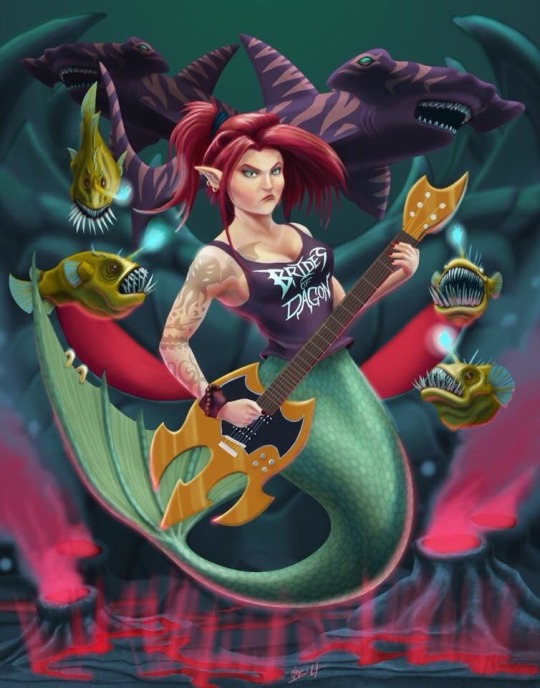

The little mermaid’s even more rebellious sister.
Prints on my RedBubble
Stickers on Etsy
#edmonton#artist#illustrator#edmonton artist#canadian artist#dark art#horror art#fantasy art#drawing#doodling#artwork#art#mermaid#mermaids#goth#punk#alt#gothgirl
1 note
·
View note
Note
What mythical creature do you think the batfam would be?
You can’t use vampires, dragons, zombies, werewolves and mermaids because they are used too often
Dick: Nickelback songs that don't sound like butt
Jason: Florida Man
Tim: the polar ice caps in a few decades
Damian: I refuse to believe there are people born after 2005
Duke: sharks with legs
Cullen: the Ninja Turtles
Stephanie: customer service workers who aren't dead inside
Cassandra: Avril Lavigne's clone
Barbara: the hardboiled egg in the Google salad emoji
Harper: as of posting this, the Twitter bird
Carrie: that Welsh Christmas horse
Kate: Canadians
Alfred: people who don't fix their posture after reading this
Selina: decent parking in the city
Bruce: DC writers that understand the characters
#dick grayson#jason todd#tim drake#damian wayne#duke thomas#cullen row#stephanie brown#cassandra cain#barbara gordon#harper row#carrie kelley#kate kane#alfred pennyworth#selina kyle#bruce wayne#batman#batfamily#batfam#batboys#batbros#batgirls#batkids#batsiblings#batman family#dc comics#headcanon#crack#tw climate change#tw current events#tw food mention
648 notes
·
View notes
Text
Disney thoughts:
You can't make blanket statements about the quality, ethos, or artistry of Disney-owned media, because the Disney company has existed for a literal century, buys up everything they can get their hands on, employs 195,000 people as of 2022 according to Wikipedia, and spans the entire globe.
"Disney" doesn't make things, they just own them, and they buy the rights to more and more media every single day. There are countless people with genuine talent and heart making the media that Disney slaps their label on, and adopting the black-and-white mentality of "Disney = bad, therefore all Disney media = bad" is incredibly reductive and unfair to all the artists that Disney exploits.
Yes, the corporate Disney overlords censor the artists and water down the art, but doesn't that mean we should be supporting the artists even more, and showing them that we see them, their art, their passion even despite the corporation's meddling? There are so, so many artists working for Disney who are active right now on Twitter, talking in depth about the horrors of the company, but begging people to please still support their art, because Disney didn't make the art and the art still deserves to be seen. There are countless artists in a position of, "make it with Disney money or don't ever get to make it at all, because making art is fucking expensive."
Should we throw up our hands and say, sorry, Dana Terrace, you've made a delightfully charming show about a queer Latina witch girl, but it's got the Disney label on it, so fuck you? Fuck Howard Ashman while we're at it, he poured his queer experience into The Little Mermaid, but we can't talk about that because Disney Bad. Domee Shi directed a heart-filled movie about a Chinese-Canadian girl coming into her own and navigating generational trauma? Eh, it's Disney, so obviously it's not authentic, so fuck Turning Red, and fuck Encanto while we're at it! Yeah, representation matters, but Disney Bad!!!
Disney the company is evil. Disney-owned media is case-by-case. Chapek isn't sitting in his office pushing the "make movie" button. For every shitty cash-grab nostalgia-bait remake they churn out, they're still a company that owns half the world and employs countless artists trying like hell to tell genuine stories. You're not obligated to engage with them, you're not required to like them, but the bullshit take of "Disney bad, therefore everything Disney slaps its name on is just as evil" is the most asinine thing I have ever heard.
That's not even getting into their other media divisions, like book publishing or video games. They have their fingers in every single media pie that exists, and you can't solve industry-wide problems with "Disney bad, never engage with anything that has their name on it."
Some fucking nuance, people, I beg you.
3K notes
·
View notes
Text
Tessa Virtue had three wedding dresses. We spoke to the Toronto designer who created them
“Tessa really was swaying away from any details that looked or felt like a skating costume.”
February 2, 2024
Tessa Virtue and Toronto Maple Leafs defenceman Morgan Rielly have just revealed they secretly tied the knot, not once, but twice, last summer. First, there was a Toronto wedding at Noce restaurant with just four guests joining them. The couple then jetted to Italy the following day and with 11 family members to celebrate their union with an intimate cocktail party, dinner and dancing.
Virtue and Rielly have always been very private about their relationship, so the fact they kept their ‘I dos’ a secret for almost six months is not a surprise. In an exclusive interview with Hello! Virtue said the decision to publicly unveil their newlywed status was a moment she struggled with. “You know when something is just so meaningful to you that you simultaneously want to just hold on to it and protect it so fiercely, and also shout from the rooftops?”
What was not a surprise about this romantic secret marriage between two Canadian sport icons? The bride’s wedding fashion game. True to form in the age of the wedding wardrobe, where multiple looks are essential, Virtue wore three incredible gowns. Ever the passionate supporter of Canadian fashion, Virtue tapped Toronto-based designer Jaclyn Whyte of Whyte Couture—a label she’s been spotted wearing at glittering events in the city including the CAFA Awards—to design each of her wedding looks.
“It was a surreal experience to work with a legend such as Tessa Virtue as we’ve followed her throughout the years making Canada proud,” says Whyte. “It’s a very personal and intimate process when making a gown, you really get to know each other. Tessa is one of the sweetest, most genuine and thoughtful people I know, and it was wonderful to get to know her and build a lasting friendship during this time we spent together. It was an honour to have made not one but three gowns for her wedding celebrations.”
According to Whyte, all the wedding looks were a true collaborative process between Virtue and herself. She says Virtue was very open to ideas, drawn to classic silhouettes, and simple, luxurious fabrics but wanted to add her own touches to make them a little less traditional. “Tessa really was swaying away from any details that looked or felt like a skating costume,” Whyte says. “Tessa knew what she wanted, we listened carefully and she trusted us. It was a magical meeting of creative minds.”
For the Toronto wedding day, Tessa wore a sleek and chic halter gown with no embellishments—a vision of modern bridal style. “This dress was super comfortable,” Whyte explains. “It was a classic silhouette with no train in soft white.”
For the Italian party, there were two looks beginning with a bespoke tea-length corseted dress, which Virtue wore for the rehearsal dinner. This dress was a particular delight for Whyte to create with the bride because it was detailed with whimsical artwork—an engagement ring, hearts, flowers and a Canadian flag to name a few—and meaningful messages chosen by Virtue like “Ti Amo” and “Marry Me,” which were hand painted on the gown by the designer. “The personalized drawings and notes made this one unique and extra special,” says Whyte.
Virtue’s third wedding dress was a most glorious and dramatic strapless mermaid gown in a beautiful pastel pink. The bodice of the dress featured delicate ruching with a flared skirt and train accessorized with a statement bow on one side of the hemline. As Virtue told Hello!, her pink wedding dress was a gown she found by chance and didn’t know she needed until she tried it on. “I just felt so confident, so fun, so me. Not exactly typical ‘bride,’ which I also loved. It was one of those magical, magical moments.”
Thanks to Virtue’s perfect pink wedding dress moment, the rose-coloured gown is likely to be one of 2024’s biggest wedding fashion musts.
—The Star
92 notes
·
View notes